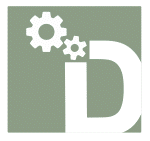Unlocking the Untapped Potential: The Synergy of 3D CAD Modelling Services and Additive Manufacturing for Rapid Component Manufacturing
- Christian Deas
- Mar 27
- 4 min read
Manufacturing is undergoing a major transformation. The combination of advanced technologies, especially 3D CAD modelling services and additive manufacturing, is changing the landscape. This partnership enhances design efficiency and accelerates production. With this synergy, industries are discovering innovative design approaches, reducing lead times, and creating highly customizable components tailored to their specific needs.
Understanding 3D CAD Modelling Services
3D CAD (Computer-Aided Design) modelling services are vital in today’s design environment. They allow designers and engineers to create intricate 3D representations of various components and assemblies. These digital models serve as the base for visualization, testing, and modifications, enabling designers to experiment with complex geometries and functionalities without needing physical prototypes.
For example, a company in the automotive industry can create a detailed 3D model of a car part. This model can then be tested for fit and functionality, saving time and resources. With a 2022 survey revealing that 62% of product developers experienced shorter design cycles by using CAD software, it's clear why this technology is essential across various sectors, from aerospace to consumer products.
The Rise of Additive Manufacturing
Additive manufacturing, commonly known as 3D printing, converts digital designs into physical objects by gradually adding material layer by layer. This method is notably different from traditional subtractive manufacturing, which removes material from a larger block. The benefits of additive manufacturing are significant, including reduced waste; it can lower material usage by as much as 90% in some cases.
This process supports rapid prototyping and small-scale production. Quick iterations allow companies to test and refine designs, which directly aligns with the need for speed and customization in the current market. Consider a medical device company that uses 3D printing to create prototypes of surgical tools. They can develop functional models in days, enabling faster regulatory approval and market entry.
The Synergy: A Fast Design to Component Manufacturing Service
Combining 3D CAD modelling services with additive manufacturing creates a seamless design-to-manufacturing process that emphasizes speed, accuracy, and flexibility. This collaboration drastically cuts down the time between design and production, allowing engineers and designers to transition from digital files to functional components in days or even hours.
For example, a recent project at a tech firm demonstrated this, where they redesigned a smartphone casing. After receiving feedback, they updated the CAD model and produced the new casing using 3D printing within 24 hours, showcasing the swift and effective nature of this integrated approach.
Enhanced Prototyping Capabilities
The conjunction of 3D CAD and additive manufacturing boosts prototyping capabilities, making it easy to produce test components quickly. Designers can utilize simulation tools in CAD software to predict how a component will perform in real-life situations. After necessary adjustments, they can create a prototype in-house, allowing real-time evaluation of its functionality.
This rapid prototyping process significantly supports iterative design practices. For example, a footwear company can test various sole designs through 3D printing, refining them based on user feedback before releasing the finalized product, reducing their time to market by about 30%.
Customization at Scale
A standout advantage of merging 3D CAD services with additive manufacturing is extensive customization. Industries that require personalized solutions, such as healthcare, aerospace, and automotive, benefit greatly from this synergy. The ability to produce tailored components on demand provides a competitive edge.
Using CAD software, designers can develop numerous component variations within a single project quickly. Additive manufacturing allows for rapid production of these variations, accommodating unique customer requirements without costly retooling or excess production. For instance, a company manufacturing dental implants can create custom implants for 20% of its clients, significantly improving customer satisfaction and loyalty.
Sustainability Benefits
The partnership of 3D CAD and additive manufacturing significantly advances sustainability practices. Traditional manufacturing often results in substantial material waste due to excess cutting. In contrast, additive manufacturing uses only the necessary materials, reducing waste generation. A study found that additive manufacturing can cut material costs by up to 50%.
Moreover, CAD’s digital nature enables optimization techniques that can lower material usage and speed up cycle times. As industries prioritize sustainability, this synergy promotes more responsible manufacturing methods, appealing to environmentally conscious consumers.
Risk Mitigation
Risk management is a crucial aspect of any manufacturing process. By combining 3D CAD services and additive manufacturing, companies lower the risks associated with product development. The fast feedback loop from rapid prototyping allows potential issues to be detected and corrected before mass production starts. This not only minimizes costly mistakes but also ensures that products meet quality standards.
Additionally, being able to quickly adjust designs based on market trends or customer feedback keeps companies agile and responsive to a constantly changing marketplace.
The Future of Manufacturing
Integrating 3D CAD modelling services with additive manufacturing offers a game-changing pathway for component production. As industries increasingly aim for efficiency, customization, and sustainability, embracing this synergy is not just beneficial; it’s essential. By leveraging these technologies, businesses can unlock their hidden potential and reshape how they design and manufacture products.
In an age that prioritizes speed and precision, the alliance of 3D CAD and additive manufacturing signifies a major leap forward. From crafting complex aerospace components to producing customized medical devices, the future of manufacturing shines brightly with this effective combination. As technology advances, the opportunities are boundless, paving the way for breakthroughs that will redefine industries for years to come.




Comments